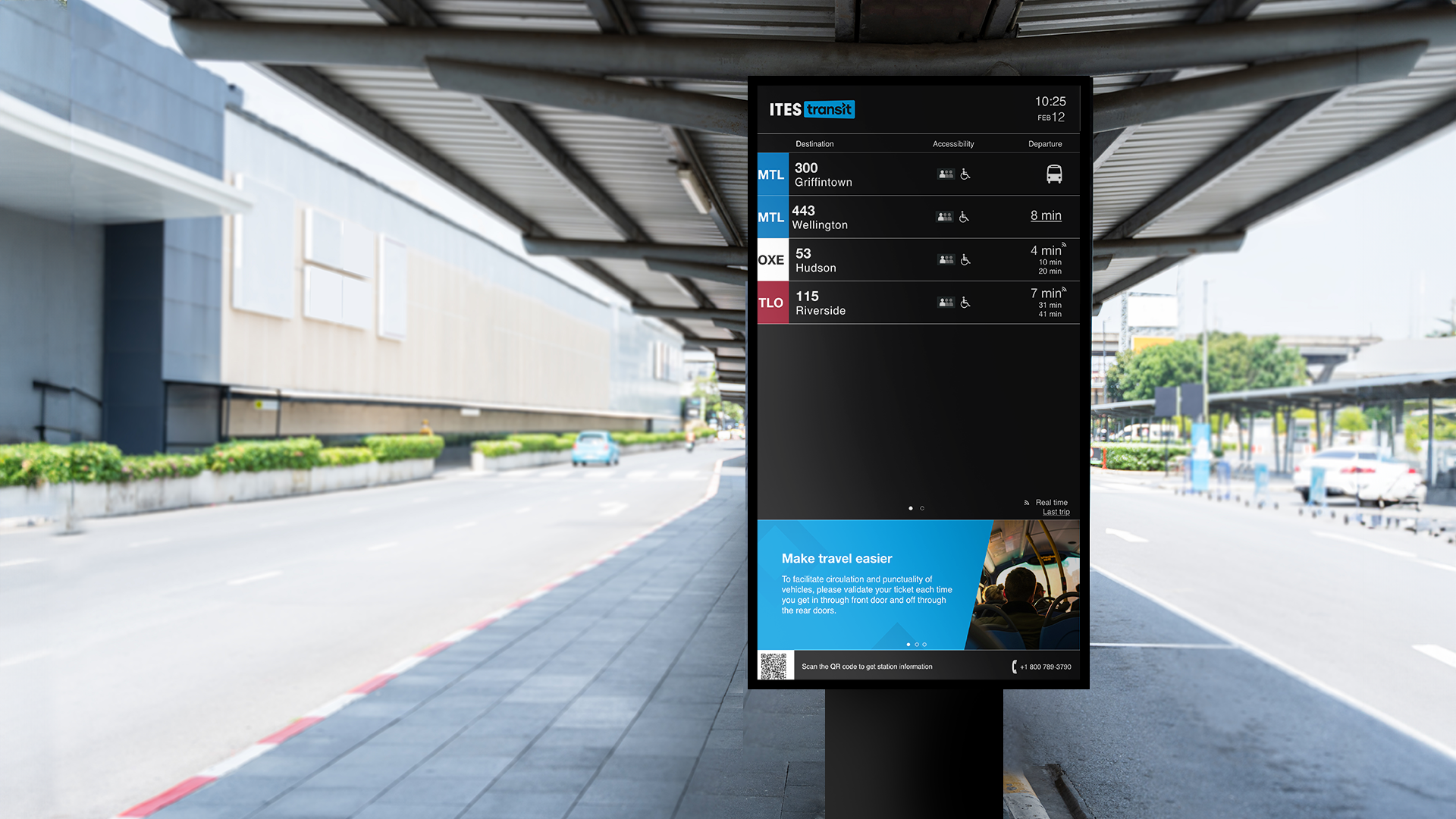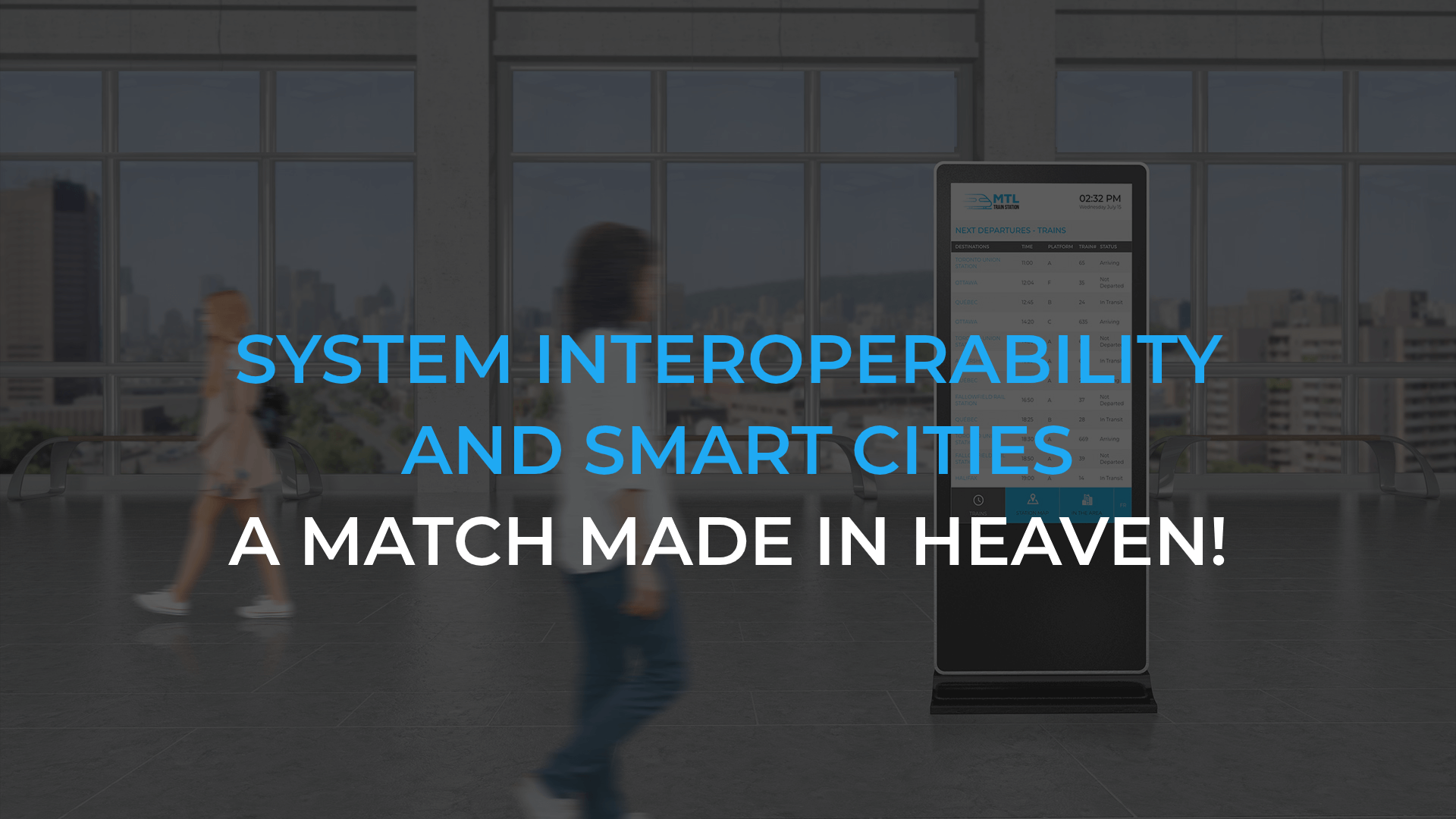Governments and cities are making significant investments in major public transportation projects. These projects transform cities, and offer a renewed user experience as well as an engaging employer brand which attracts new clients and improves employee retention.
The vital role of technological solutions
It is essential for stakeholders to implement complete, proven, save and scalable technological solutions. Furthermore, these solutions must go beyond overcoming current challenges: it is vital that they also be designed with the proper flexibility to adapt to future improvements and needs, thus ensuring their continued sustainability and relevance.
Communication hub
A hub ensures communications with users through comprehensive passenger information systems, which include general, public interest messages as well as emergency communications. These messages can be provided by real-time data sources (GTFS-RT) or be sent from a preprogrammed message databank.
A communication hub can also be used to share internal communications both to drivers and to office employees. They can share important messages, health and safety reminders, birthdays, congratulations, open positions, etc. This ensures that employees can access all necessary information, giving them a sense of belonging and making them feel important within the organization. It is also a great way to attract new talent and improve employee loyalty.
Passenger information
For users, passenger information is the second most important expectation of public transportation users (after punctuality of trains and buses). Passenger information is the accurate communication of upcoming departures and of messages sharing information or announcing service disruptions, and must reflect reality precisely. To ensure this data is managed efficiently, solutions must integrate and perfectly control the concept of interoperability by encompassing different sources in real time (e.g.: GTFS and/or application programming interfaces, or APIs).
Interoperability
Interoperability is the ability of a system or of a product to interface and function with different existing systems without any access limitation. Interoperability standards facilitate exchanges between transportation organizations and third parties, and help provide passengers with aggregate, real-time information for their entire trip. However, although standardization initiatives are in place, some inconsistencies may still occur, for example when making changes to transportation schedules.
Comprehensive communication platform
Most teams are usually made up of only a few employees who are already very busy with their daily tasks. In this context, it is vital to choose a communication solution that will efficiently manage all hybrid communications; centralizing all communications within a single platform will help streamline the management process. A complete communication platform will also include an extensive content bank that will facilitate the communication team’s managers and members work when streaming content for all employees.
In conclusion, investing in public transportation and implementing appropriate technological solutions are vital to improve the experience of users and employees. There may be challenges ahead, but the future of public transportation still looks bright, thanks to the constant pace of technological evolution.




.jpg)

